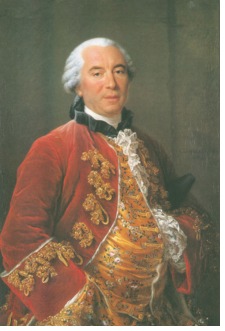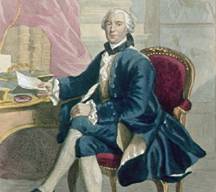Georges-Louis Leclerc, comte de Buffon (1707-1788)

In his 1749 essay, “Varieties of the Human Species” essay, Buffon described some non-white varieties or races as “ugly.” On these grounds the brilliant postmodernist cultural theorist, Tzvetan Todorov, criticized Buffon’s ethnography as the primordial paradigm of modern racism (On Human Diversity: Nationalism, Racism, and Exoticism in French Thought, trans. Catherine Porter, Cambridge, Mass., 1993). In truth, any one of us, upon an initial reading of Buffon’s 1749 is taken back by his derogatory language that, by today’s standards, is the very antithesis of “Political Correctness.”
The task of the historian, whose job is to avoid anachronistic judgments, is to analyze Buffon’s terminology in the context of his own times: his multivolume Histoire naturelle, his contemporaries’ writings and that of his predecessors.’ All of these readings prove that Buffon’s usage of “ugly” was never gratuitous. The term always had some kind of meaningful content, albeit from more than one intellectual tradition. While Enlightenment thinkers created new fields like aesthetics, many legacies continued unabated.
Frequently Buffon used the word “ugly” to mean unhealthy: be it from Galen’s medical teachings or Aristotle’s philosophy. Sometimes Buffon’s notion was used in a Platonic or Christian perspective: deviation from a pristine Ideal(l)s or Creation. Other times “ugly” appeared as a rhetorical convention: low literary style to persuade the reader that environment had diversified the original human species. And, finally, Buffon even used the concept in the modern sense of aesthetics: unattractiveness that accounted for peculiar customs which otherwise defied logic, reason, or common sense.
The story of Buffon’s intellectual contributions to the history of anthropology is a completely separate subject matter from Todorov’s story of the cultural impact that Buffon’s publications have had on the development of the “racialist” doctrine. To understand Buffon’s anthropology in good faith (i.e. what his words meant to eighteenth-century readers) requires old-fashioned historical study of ideas and texts. Todorov’s work is fascinating — even inspiring — but it certainly does not do justice to Buffon himself.
 Georges Buffon, “Variétés dans l’espèce humaine,” Histoire naturelle, générale et particulière, avec la description du Cabinet du Roy (Paris: L’Imprimerie royale, 1749), t. 3, pp. 371-530. Georges Buffon, “Variétés dans l’espèce humaine,” Histoire naturelle, générale et particulière, avec la description du Cabinet du Roy (Paris: L’Imprimerie royale, 1749), t. 3, pp. 371-530.
 Georges Buffon, “Of the Varieties in the Human Species,” Barr’s Buffon. Buffon’s Natural History Containing A Theory Of The Earth, A General History Of Man, Of The Brute Creation, And Of Vegetables, Minerals, Etc. (London: T. Gillet, 1807), vol. 4 (of 10), pp. 190-352. Transcribed by Miriam C. Meijer. Translated by BARR. Barr left out a lot of words and all of the footnotes. He occasionally made mistakes: incorrect words or incorrect translation of an entire phrase. Yet his translation is probably better than William Smellie’s. Georges Buffon, “Of the Varieties in the Human Species,” Barr’s Buffon. Buffon’s Natural History Containing A Theory Of The Earth, A General History Of Man, Of The Brute Creation, And Of Vegetables, Minerals, Etc. (London: T. Gillet, 1807), vol. 4 (of 10), pp. 190-352. Transcribed by Miriam C. Meijer. Translated by BARR. Barr left out a lot of words and all of the footnotes. He occasionally made mistakes: incorrect words or incorrect translation of an entire phrase. Yet his translation is probably better than William Smellie’s.
 Georges Buffon, “Of the Varieties of the Human Species,” Natural History: General and Particular (8 volumes, 1781). Transcribed by Fran Moran. Translated by William SMELLIE. Georges Buffon, “Of the Varieties of the Human Species,” Natural History: General and Particular (8 volumes, 1781). Transcribed by Fran Moran. Translated by William SMELLIE.
 Georges Buffon, “Discours sur le style. Discours prononcé; à l'acadèmie française par M. de Buffon le jour de sa reception le 25 aôut 1753.” Georges Buffon, “Discours sur le style. Discours prononcé; à l'acadèmie française par M. de Buffon le jour de sa reception le 25 aôut 1753.”
Petrus Camper was greatly influenced by the “Great Buffon.”
Georges Leclerc was born into a wealthy family. His father became lord of Buffon and Montbard, and also counsellor in the parliament of Burgundy in France.
Georges received his education at the Jesuit College of Godrans in Dijon. In 1723, on his father’s wishes, he started to study law, but switched to mathematics, medicine and botany in Angers. After a duel he had to flee Angers. For two years he travelled through southern France, England and Italy. Upon his mother’s death, Buffon returned to his family estate and took over its management.
As a wealthy landowner Buffon was able to follow his various intellectual interests. He began research into the calculus of probability and translated various works, among them Newton’s Fluxions, to which he added a comparative discussion of the infinitesimal calculus according to Newton and Leibnitz. His Mémoire sur le jeu de franc-carreau (Memoir on the game of Franc-Carreau [a game of chance in which two coins fall on a tiled floor and the bet is whether they fall on a crack]) introduced differential and integral calculus into probability theory and earned him nomination to the Académies des Sciences in 1734.
In 1739 Buffon was appointed keeper of the Royal Botanical Garden in Paris. Every year he spent eight months at his estate and four months in Paris. During the next five decades he managed to double the size of the Botanical Garden, enlarged its collections and improved its buildings, while at the same time expanding his own estate and increasing his wealth considerably.
Buffon’s aim in life was to produce an encyclopaedia of 50 volumes called Histoire naturelle, générale et particulière. By the time of his death, 36 volumes had been published. An enormous success, they covered such diverse matters as geology, biology, mathematics, chemistry, optics, astronomy, philosophy and much more. Buffon harvested admiration, criticism, and envy from all quarters. A brilliant and independent thinker, Buffon insisted that all natural phenomena have natural causes. (Buffon criticised Newton for the notion that the Sun and the planets were initially God’s creation and developed his own theory that the planets resulted from meteorite collisions with the Sun.)
Buffon had married late in life (at the age of 45) and his wife died in 1771. Their only son developed into a playboy who squandered his inheritance and was guillotined during the French Revolution.
|
book@petruscamper.com
[ home ]
[ reviews ] [ texts ] [ projects ] [ order ] [ sitemap ]
Miriam Claude Meijer, Ph.D. © All Rights Reserved
|
